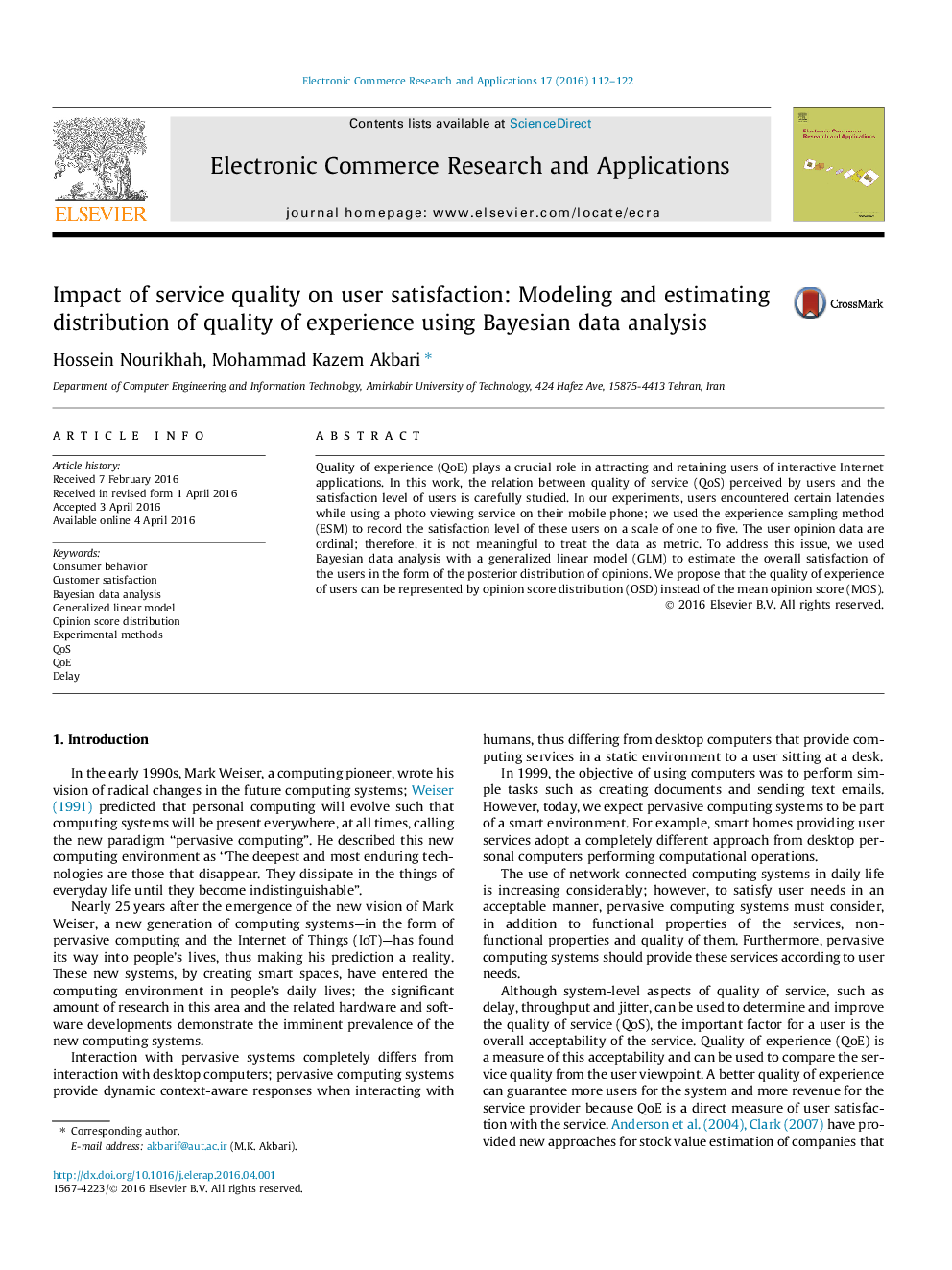| کد مقاله | کد نشریه | سال انتشار | مقاله انگلیسی | نسخه تمام متن |
|---|---|---|---|---|
| 379553 | 659483 | 2016 | 11 صفحه PDF | دانلود رایگان |
• Quality of experience (QoE) perceived by users plays a crucial role in attracting and retaining customers.
• Opinion score distribution (OSD) is a better representation of the QoE of users than previous metric measures such as the mean opinion score (MOS) which wrongly assumes that QoE data are metric while they are ordinal categorical.
• We use Bayesian data analysis to estimate the posterior distribution of QoE, considering available prior quality of service (QoS) data and user ratings.
Quality of experience (QoE) plays a crucial role in attracting and retaining users of interactive Internet applications. In this work, the relation between quality of service (QoS) perceived by users and the satisfaction level of users is carefully studied. In our experiments, users encountered certain latencies while using a photo viewing service on their mobile phone; we used the experience sampling method (ESM) to record the satisfaction level of these users on a scale of one to five. The user opinion data are ordinal; therefore, it is not meaningful to treat the data as metric. To address this issue, we used Bayesian data analysis with a generalized linear model (GLM) to estimate the overall satisfaction of the users in the form of the posterior distribution of opinions. We propose that the quality of experience of users can be represented by opinion score distribution (OSD) instead of the mean opinion score (MOS).
Journal: Electronic Commerce Research and Applications - Volume 17, May–June 2016, Pages 112–122
